Living in a small apartment can be a challenge, especially when it comes to decorating. Limited space can make it feel cramped and overwhelming, but with a little creativity and planning, you can transform your living room into a stylish and functional oasis. From utilizing color palettes and maximizing vertical space to embracing minimalist design and incorporating smart furniture, this article explores 44 design ideas to inspire you in creating the perfect small apartment living room.
Maximize Natural Light
Embrace the power of natural light to brighten and enlarge your space. Choose light-colored paint for the walls and use sheer curtains to let sunlight stream in. If your living room lacks natural light, consider installing a skylight or adding mirrors to reflect existing light. Opt for furniture with light upholstery, and place mirrors strategically to bounce light around the room, creating an airy and spacious feel. This approach aligns with the current trend of bringing the outdoors in, emphasizing natural elements and light in interior design.
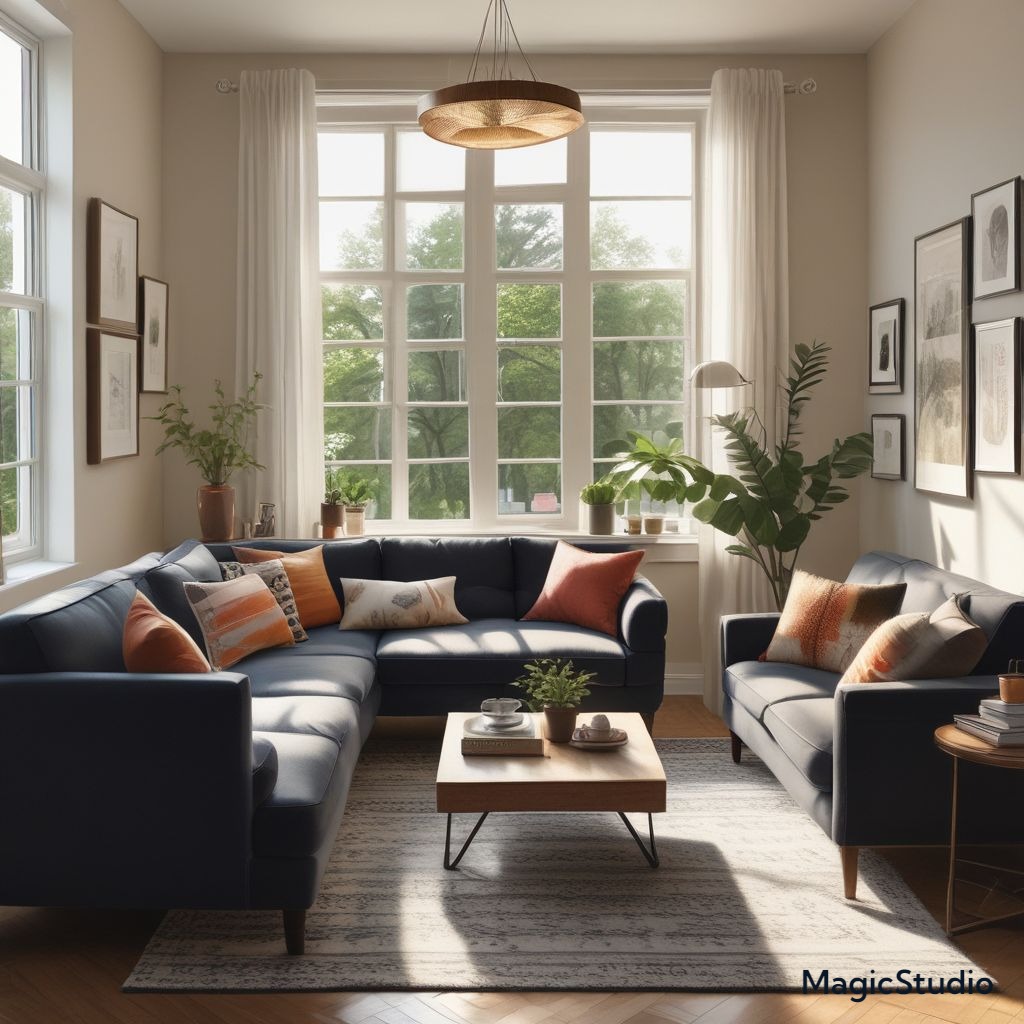
Maximize Natural Light
Embrace the power of natural light to brighten and enlarge your space. Choose light-colored paint for the walls and use sheer curtains to let sunlight stream in. If your living room lacks natural light, consider installing a skylight or adding mirrors to reflect existing light. Opt for furniture with light upholstery, and place mirrors strategically to bounce light around the room, creating an airy and spacious feel. This approach aligns with the current trend of bringing the outdoors in, emphasizing natural elements and light in interior design.
Embrace the Power of Mirrors
Mirrors are a designer’s secret weapon for small spaces. Strategically placed mirrors can create the illusion of more space and light. Consider a large mirror behind the sofa to visually expand the room, or use smaller mirrors to reflect light from windows. A decorative mirror above the fireplace or a gallery wall of mirrors can add depth and dimension to the space. Mirrors also add a touch of sophistication and can complement a variety of design styles, from modern to traditional. This strategy is popular in both the US and EU, as it allows homeowners to create an illusion of more space in small living areas.
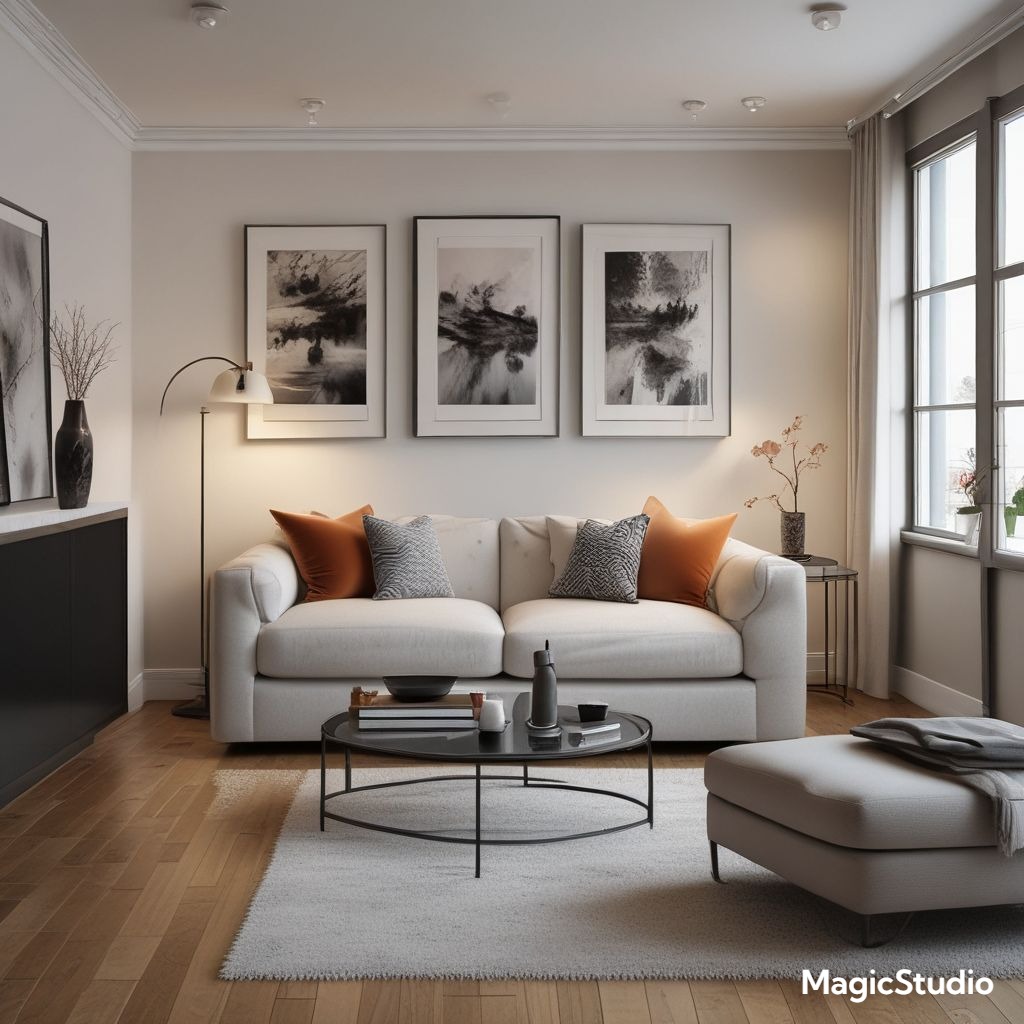
Embrace the Power of Mirrors
Mirrors are a designer’s secret weapon for small spaces. Strategically placed mirrors can create the illusion of more space and light. Consider a large mirror behind the sofa to visually expand the room, or use smaller mirrors to reflect light from windows. A decorative mirror above the fireplace or a gallery wall of mirrors can add depth and dimension to the space. Mirrors also add a touch of sophistication and can complement a variety of design styles, from modern to traditional. This strategy is popular in both the US and EU, as it allows homeowners to create an illusion of more space in small living areas.
Go for a Minimalist Approach
Minimalism is a popular design trend that emphasizes simplicity and functionality. In a small living room, a minimalist approach can help to create a sense of calm and spaciousness. Choose furniture with clean lines and simple silhouettes, and avoid clutter by keeping decor to a minimum. Opt for neutral colors like white, gray, and beige, and use accent colors sparingly. You can introduce texture with natural materials like wood, leather, and linen. This approach aligns with the current trend of decluttering and promoting mental well-being through minimalist design, popular in both the US and EU.
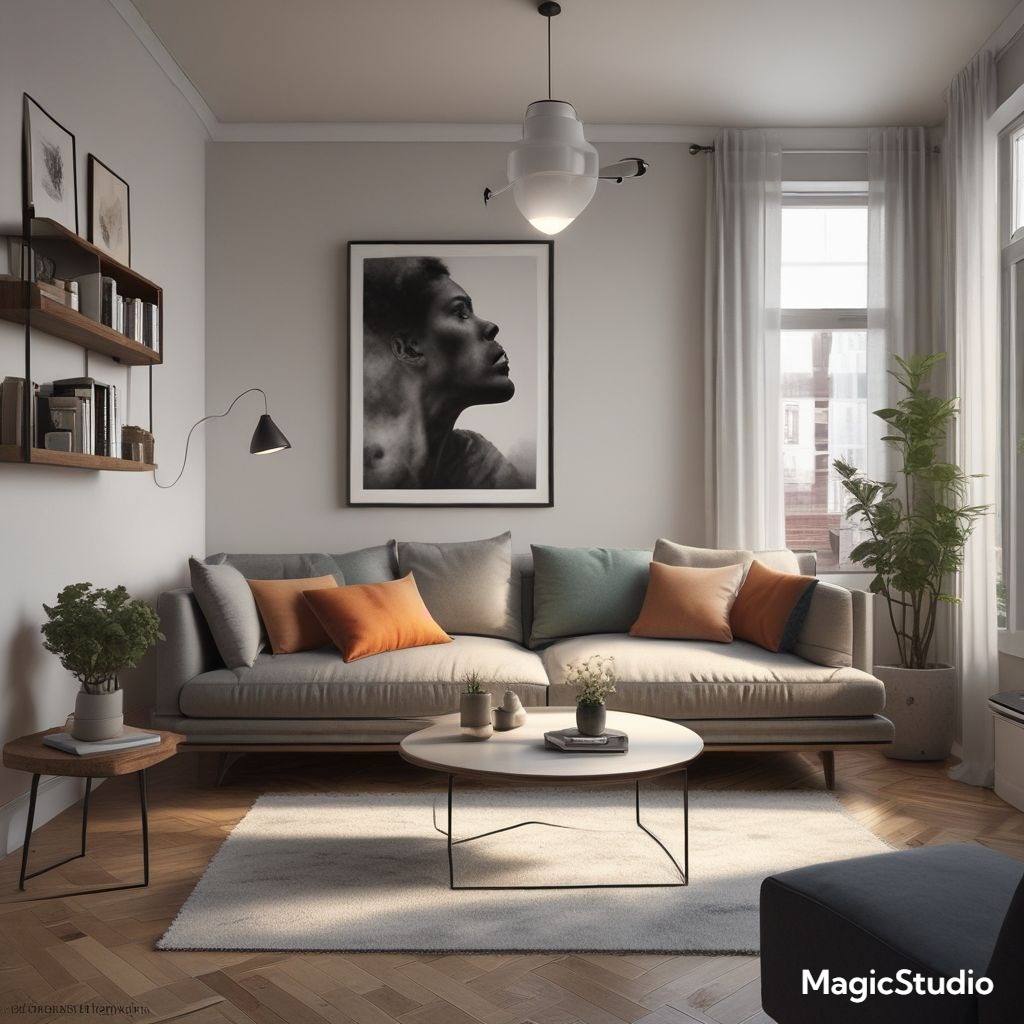
Go for a Minimalist Approach
Minimalism is a popular design trend that emphasizes simplicity and functionality. In a small living room, a minimalist approach can help to create a sense of calm and spaciousness. Choose furniture with clean lines and simple silhouettes, and avoid clutter by keeping decor to a minimum. Opt for neutral colors like white, gray, and beige, and use accent colors sparingly. You can introduce texture with natural materials like wood, leather, and linen. This approach aligns with the current trend of decluttering and promoting mental well-being through minimalist design, popular in both the US and EU.
Create a Focal Point
Draw the eye to a specific area of your living room by creating a focal point. This could be a statement piece of furniture, such as a vintage armchair or a modern sofa. You could also use a piece of artwork, a decorative fireplace, or a bookshelf to create a focal point. By drawing attention to a specific area, you can distract from the room’s smaller size and create a visually interesting space. This technique is often employed in smaller apartments in both the US and EU, highlighting specific elements and creating a sense of visual interest.

Create a Focal Point
Draw the eye to a specific area of your living room by creating a focal point. This could be a statement piece of furniture, such as a vintage armchair or a modern sofa. You could also use a piece of artwork, a decorative fireplace, or a bookshelf to create a focal point. By drawing attention to a specific area, you can distract from the room’s smaller size and create a visually interesting space. This technique is often employed in smaller apartments in both the US and EU, highlighting specific elements and creating a sense of visual interest.
Use Multifunctional Furniture
Maximize your living room’s functionality with multifunctional furniture. A sofa bed can double as a guest bed, while storage ottomans can provide seating and extra storage space. Coffee tables with shelves or drawers offer additional storage, and a bookshelf can also serve as a room divider. Look for furniture with hidden storage compartments, such as ottomans with lift-up tops or coffee tables with built-in drawers. This smart approach is increasingly popular in small apartments in both the US and EU, as it allows homeowners to utilize every inch of available space.
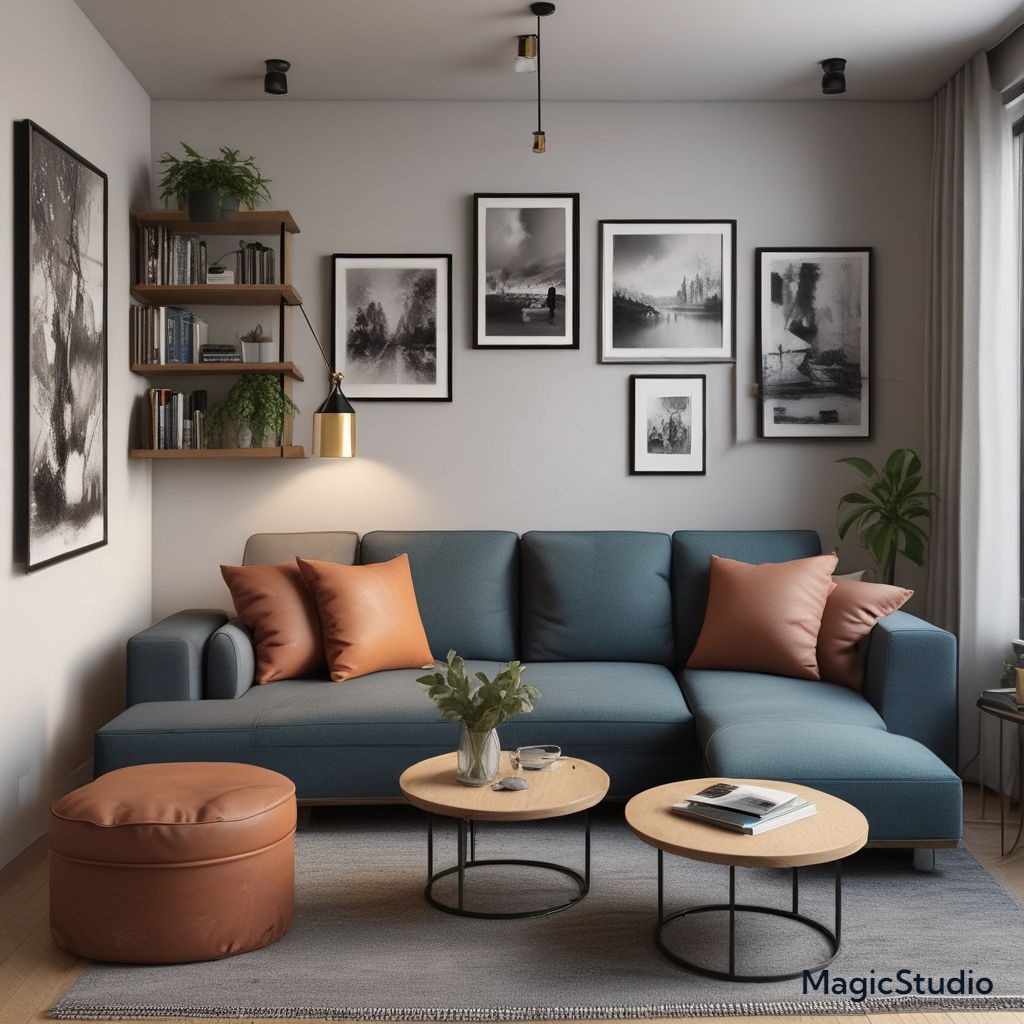
Use Multifunctional Furniture
Maximize your living room’s functionality with multifunctional furniture. A sofa bed can double as a guest bed, while storage ottomans can provide seating and extra storage space. Coffee tables with shelves or drawers offer additional storage, and a bookshelf can also serve as a room divider. Look for furniture with hidden storage compartments, such as ottomans with lift-up tops or coffee tables with built-in drawers. This smart approach is increasingly popular in small apartments in both the US and EU, as it allows homeowners to utilize every inch of available space.
Embrace a Light and Airy Color Palette
Light colors like white, cream, and pastel shades create an illusion of more space and light in small living rooms. Use these shades on the walls, ceilings, and furniture upholstery to make the room feel larger and brighter. You can add pops of color with throw pillows, rugs, and artwork. Light colors also reflect light, making the room feel more spacious and welcoming. This approach is favored in both the US and EU, as it creates a sense of openness and airiness in small spaces.

Embrace a Light and Airy Color Palette
Light colors like white, cream, and pastel shades create an illusion of more space and light in small living rooms. Use these shades on the walls, ceilings, and furniture upholstery to make the room feel larger and brighter. You can add pops of color with throw pillows, rugs, and artwork. Light colors also reflect light, making the room feel more spacious and welcoming. This approach is favored in both the US and EU, as it creates a sense of openness and airiness in small spaces.
Choose a Neutral Color Palette
Neutral colors such as gray, beige, and taupe are incredibly versatile and can create a calm and sophisticated atmosphere. These colors provide a backdrop for your furniture and accessories, allowing you to change the look of the room easily with different accent colors and textures. Neutral tones also pair well with natural materials like wood and stone, adding warmth and sophistication to the space. This approach is popular in both the US and EU, as neutral colors create a timeless and adaptable design scheme.
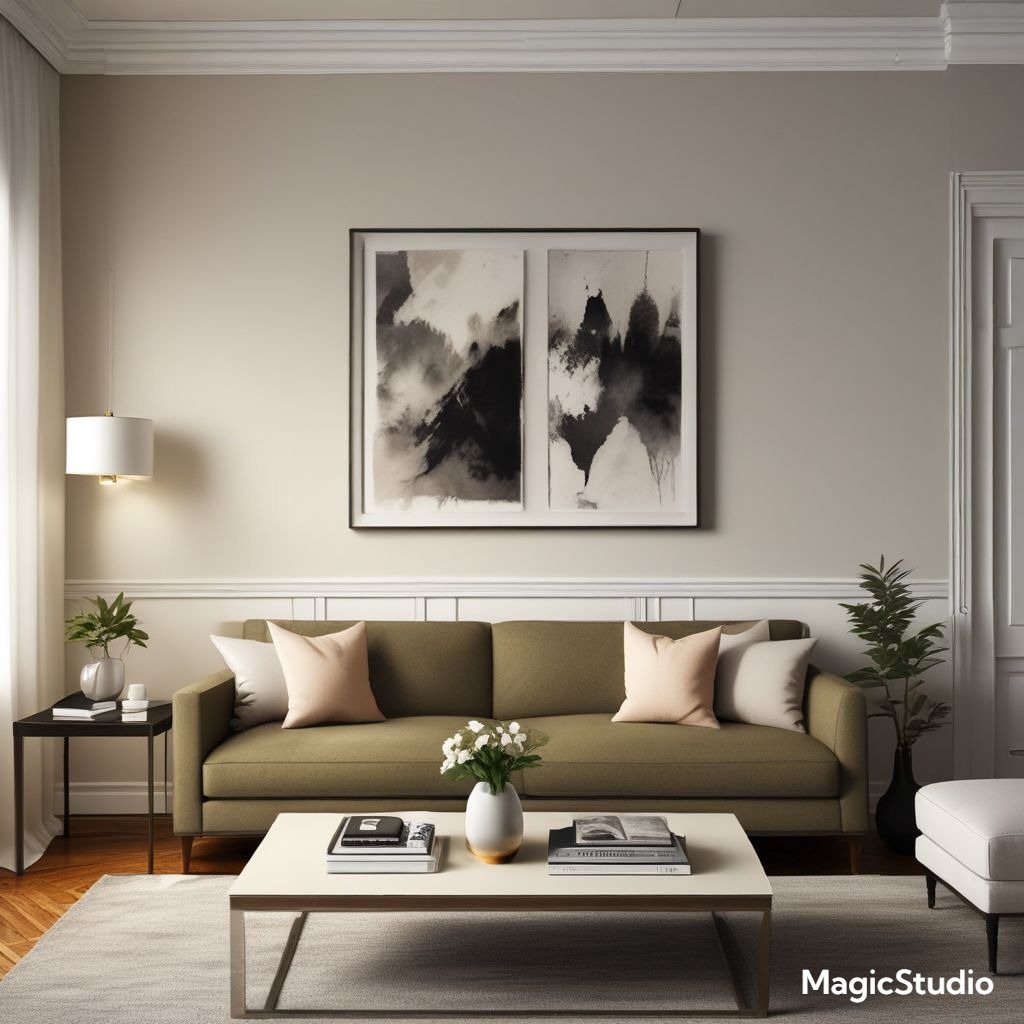
Choose a Neutral Color Palette
Neutral colors such as gray, beige, and taupe are incredibly versatile and can create a calm and sophisticated atmosphere. These colors provide a backdrop for your furniture and accessories, allowing you to change the look of the room easily with different accent colors and textures. Neutral tones also pair well with natural materials like wood and stone, adding warmth and sophistication to the space. This approach is popular in both the US and EU, as neutral colors create a timeless and adaptable design scheme.
Incorporate a Bold Accent Wall
A bold accent wall can add a touch of personality and visual interest to your living room. Choose a vibrant color or a patterned wallpaper for a single wall, creating a focal point and drawing the eye away from the room’s smaller size. The accent wall should complement the overall color scheme of the room and add a touch of energy and dynamism. This technique is often used in small apartments in both the US and EU to make the room feel more dynamic and engaging.
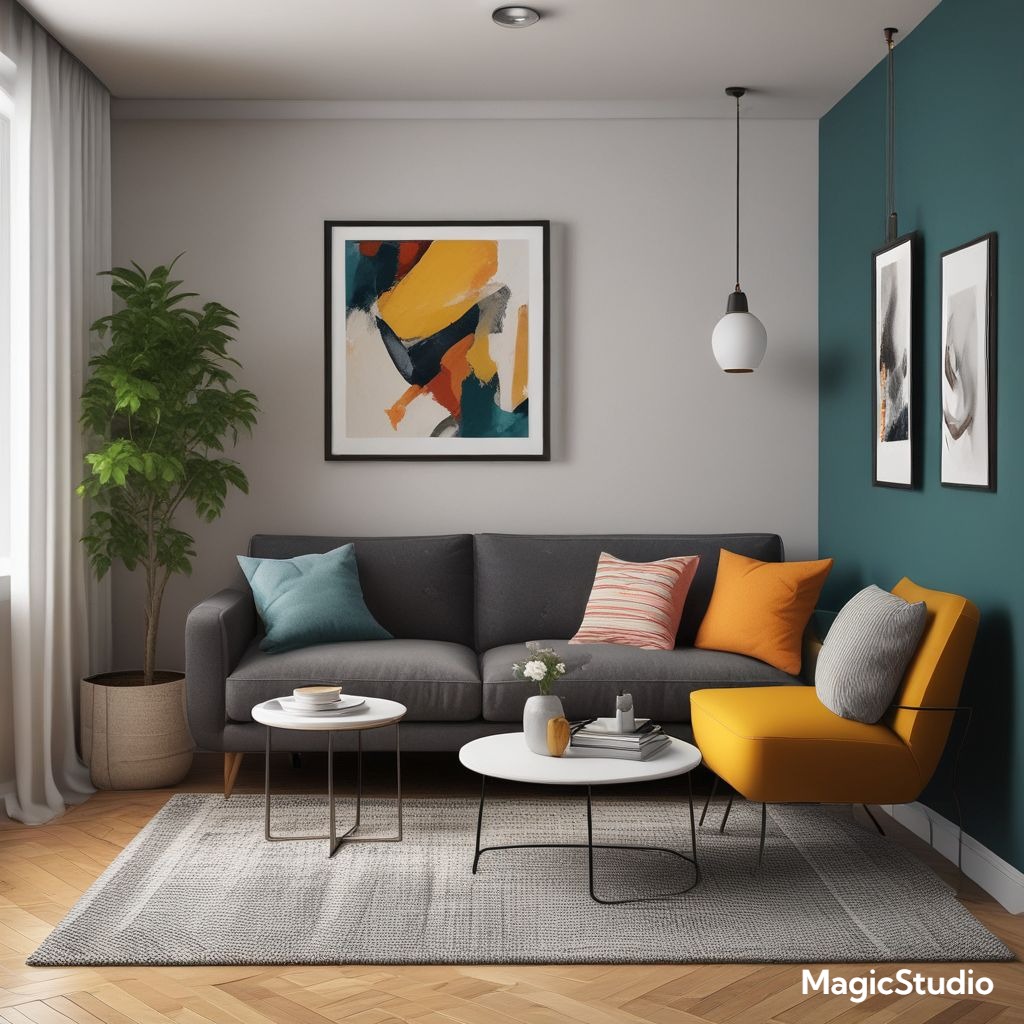
Incorporate a Bold Accent Wall
A bold accent wall can add a touch of personality and visual interest to your living room. Choose a vibrant color or a patterned wallpaper for a single wall, creating a focal point and drawing the eye away from the room’s smaller size. The accent wall should complement the overall color scheme of the room and add a touch of energy and dynamism. This technique is often used in small apartments in both the US and EU to make the room feel more dynamic and engaging.
Go for a Warm and Inviting Atmosphere
Create a warm and inviting atmosphere in your living room by using soft lighting and warm color tones. Incorporate elements like candles, lamps, and warm-toned rugs to create a cozy and welcoming feel. Warm colors like beige, brown, and yellow can help to create a sense of warmth and comfort, while soft lighting can add a touch of romance and intimacy. This approach aligns with the current trend of creating home environments that are welcoming and comforting, popular in both the US and EU.

Go for a Warm and Inviting Atmosphere
Create a warm and inviting atmosphere in your living room by using soft lighting and warm color tones. Incorporate elements like candles, lamps, and warm-toned rugs to create a cozy and welcoming feel. Warm colors like beige, brown, and yellow can help to create a sense of warmth and comfort, while soft lighting can add a touch of romance and intimacy. This approach aligns with the current trend of creating home environments that are welcoming and comforting, popular in both the US and EU.
Embrace the Power of Texture
Adding texture to your small living room can make it feel more inviting and interesting. Use a variety of materials such as wood, wool, leather, and linen to create visual interest and depth. Introduce textured throws, pillows, rugs, and curtains to add dimension to the space. Incorporating different textures can also add a sense of warmth and sophistication to the room, making it feel more inviting and comfortable. This technique is popular in both the US and EU, as it allows homeowners to create a visually engaging and tactile experience.
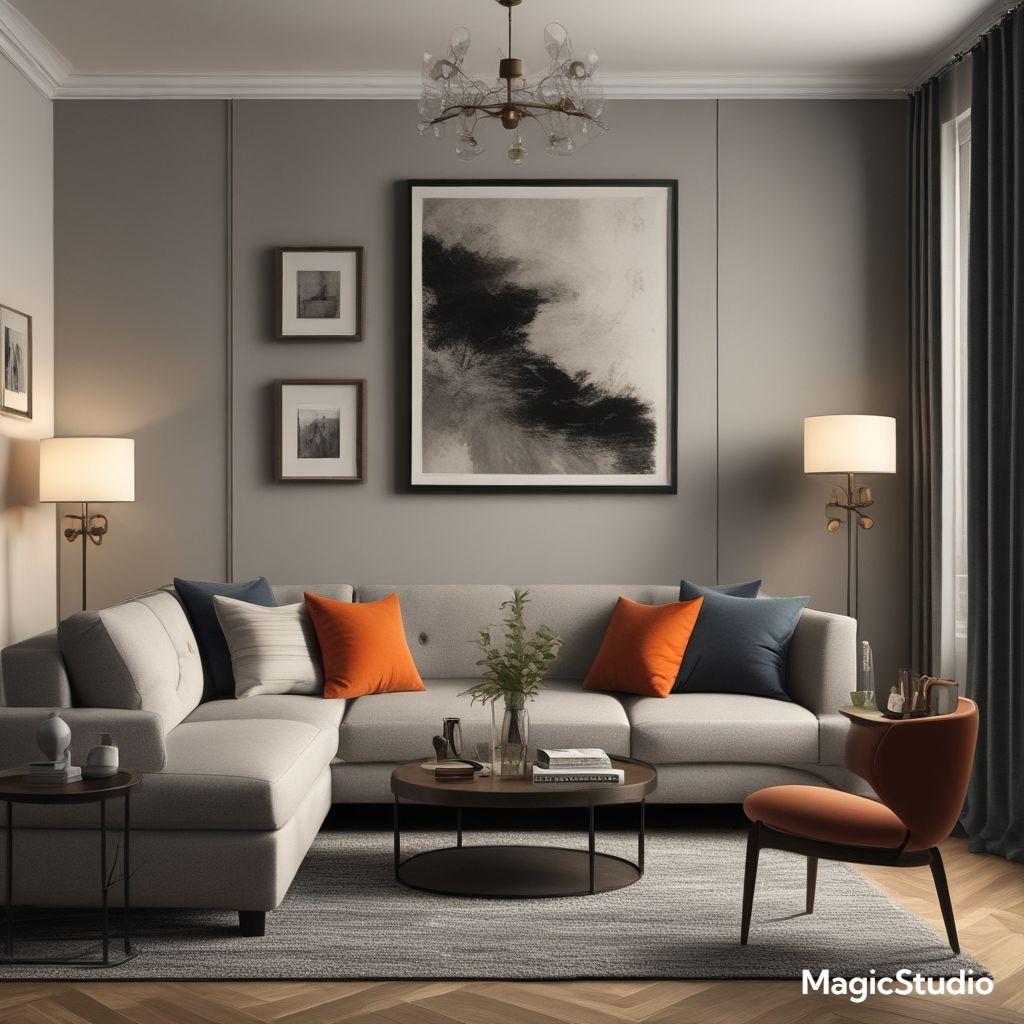
Embrace the Power of Texture
Adding texture to your small living room can make it feel more inviting and interesting. Use a variety of materials such as wood, wool, leather, and linen to create visual interest and depth. Introduce textured throws, pillows, rugs, and curtains to add dimension to the space. Incorporating different textures can also add a sense of warmth and sophistication to the room, making it feel more inviting and comfortable. This technique is popular in both the US and EU, as it allows homeowners to create a visually engaging and tactile experience.
Add a Touch of Greenery
Plants can add life and vibrancy to any space, and they are particularly effective in small living rooms. They can help to purify the air, and they can also make the room feel more spacious and welcoming. Choose plants that thrive in low light conditions, such as snake plants, ZZ plants, or peace lilies. Place them strategically on shelves, side tables, or hanging planters to add visual interest and create a sense of nature indoors. This approach is increasingly popular in both the US and EU, as it reflects a growing trend toward incorporating biophilic design principles into interior spaces.
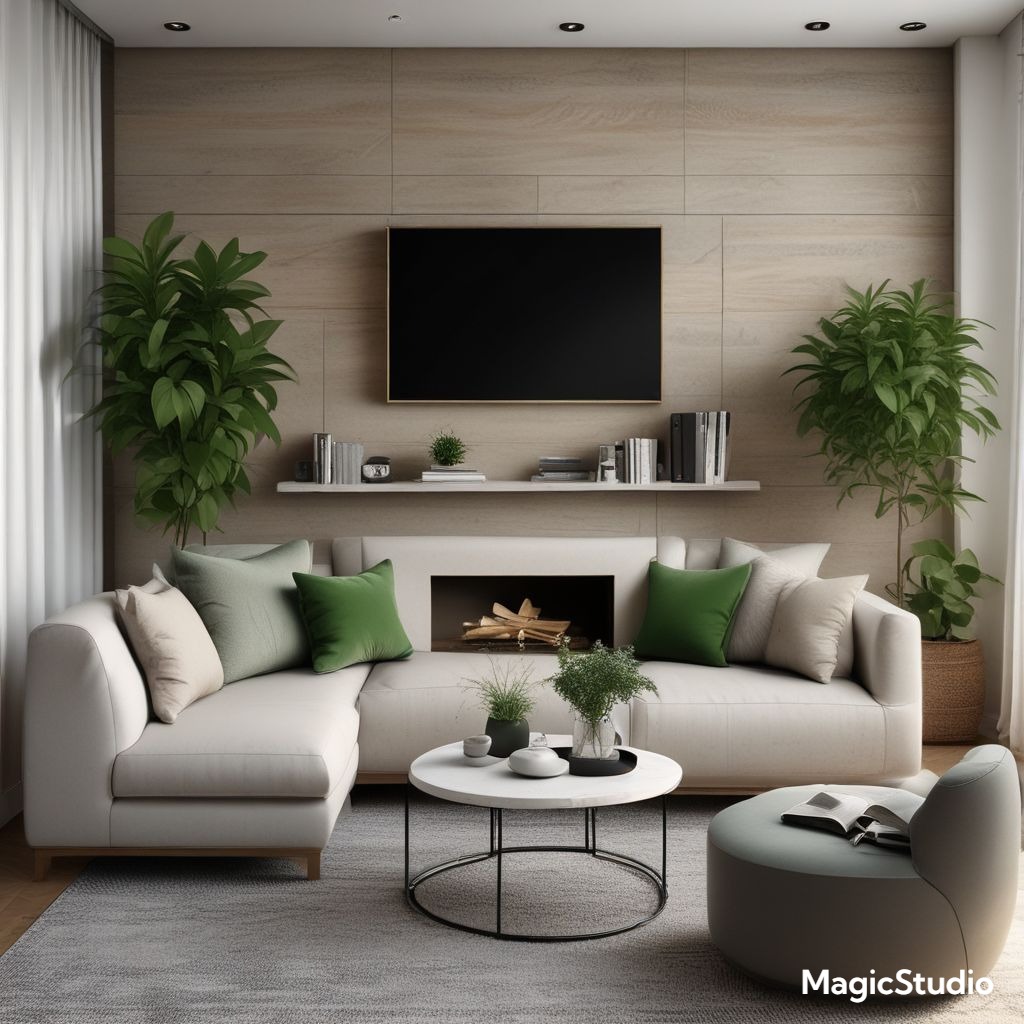
Add a Touch of Greenery
Plants can add life and vibrancy to any space, and they are particularly effective in small living rooms. They can help to purify the air, and they can also make the room feel more spacious and welcoming. Choose plants that thrive in low light conditions, such as snake plants, ZZ plants, or peace lilies. Place them strategically on shelves, side tables, or hanging planters to add visual interest and create a sense of nature indoors. This approach is increasingly popular in both the US and EU, as it reflects a growing trend toward incorporating biophilic design principles into interior spaces.
Utilize Vertical Space
Maximize your vertical space by adding storage solutions like floating shelves, wall-mounted bookshelves, and vertical planters. This frees up floor space, making the room feel less cramped. Look for furniture with built-in storage, such as ottomans with lift-up tops or coffee tables with shelves. Utilize the walls for storage and display, adding a sense of functionality and order to the space. This is a common practice in both the US and EU, particularly in small apartments where space is limited.
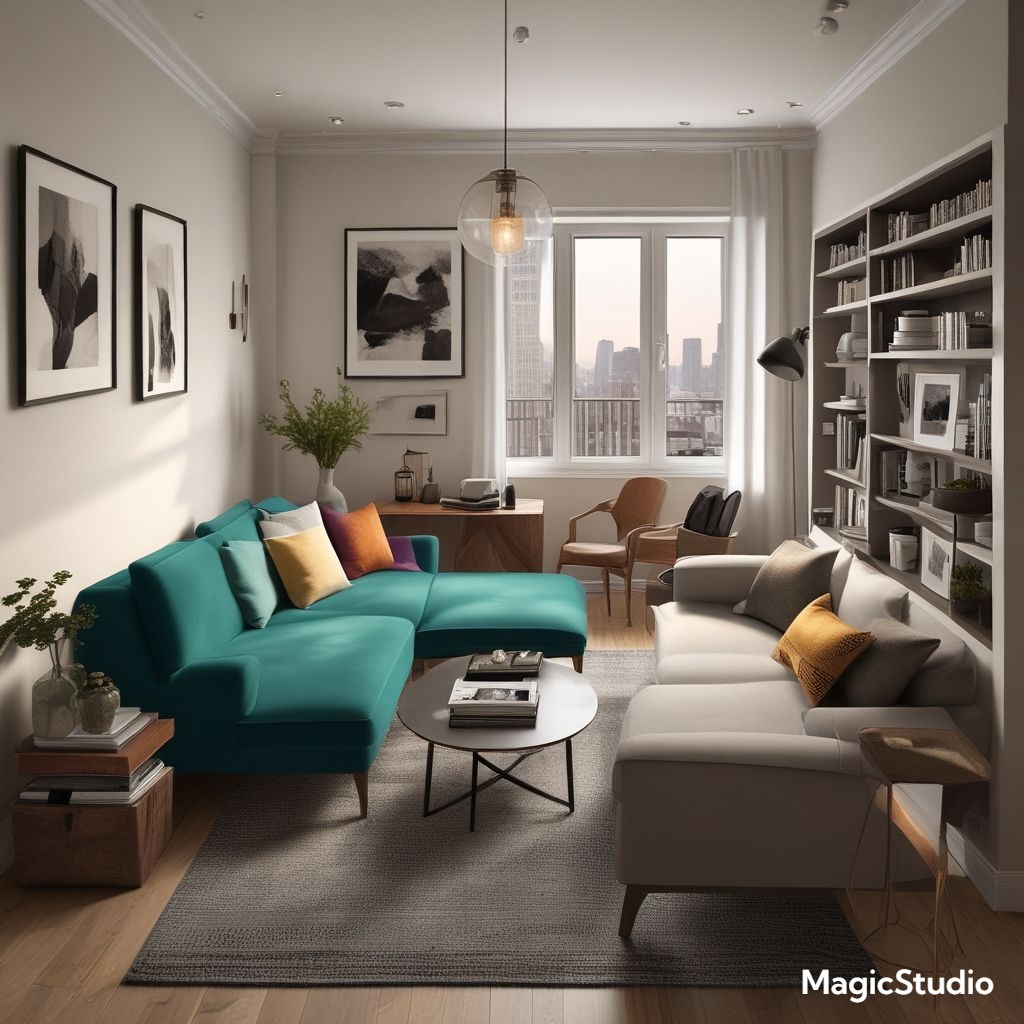
Utilize Vertical Space
Maximize your vertical space by adding storage solutions like floating shelves, wall-mounted bookshelves, and vertical planters. This frees up floor space, making the room feel less cramped. Look for furniture with built-in storage, such as ottomans with lift-up tops or coffee tables with shelves. Utilize the walls for storage and display, adding a sense of functionality and order to the space. This is a common practice in both the US and EU, particularly in small apartments where space is limited.
Choose a Flowing Layout
Create a sense of flow in your living room by arranging furniture in a way that allows for easy movement. Avoid placing furniture in the middle of the room, as this can make the space feel cramped. Instead, try to create a clear path around the room, and make sure that there is ample space between furniture pieces. This approach allows for a more inviting and user-friendly living room, popular in both the US and EU.
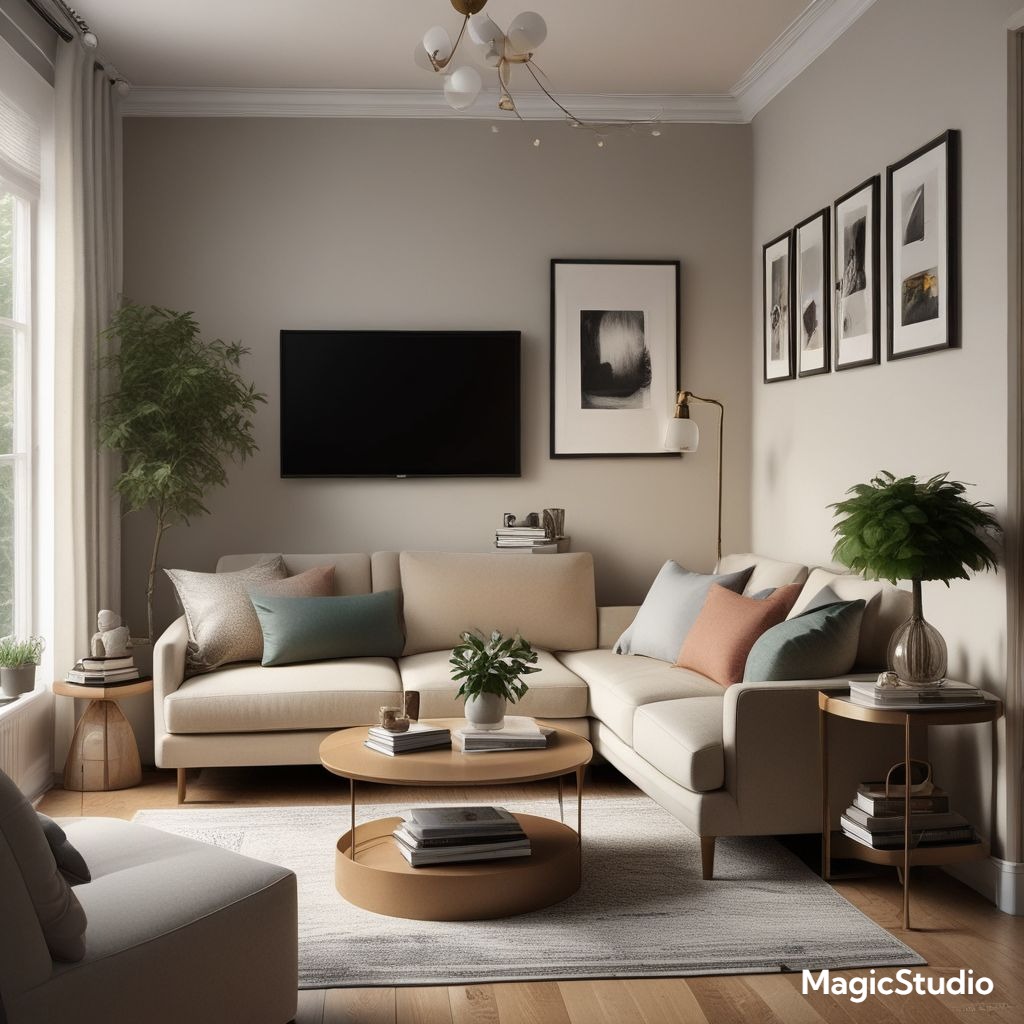
Choose a Flowing Layout
Create a sense of flow in your living room by arranging furniture in a way that allows for easy movement. Avoid placing furniture in the middle of the room, as this can make the space feel cramped. Instead, try to create a clear path around the room, and make sure that there is ample space between furniture pieces. This approach allows for a more inviting and user-friendly living room, popular in both the US and EU.
Create a Sense of Separation
If your living room is open to other areas of your apartment, use a room divider or a piece of furniture to create a sense of separation. This can help to define the living room space and make it feel more intimate. Use a bookshelf, a curtain, or a screen to create a visual barrier between the living room and the other areas of your apartment. This approach is becoming increasingly popular in open-plan apartments in both the US and EU, allowing homeowners to create distinct zones within a single space.

Create a Sense of Separation
If your living room is open to other areas of your apartment, use a room divider or a piece of furniture to create a sense of separation. This can help to define the living room space and make it feel more intimate. Use a bookshelf, a curtain, or a screen to create a visual barrier between the living room and the other areas of your apartment. This approach is becoming increasingly popular in open-plan apartments in both the US and EU, allowing homeowners to create distinct zones within a single space.
Use a Rug to Define the Space
A rug can help to define the living room area, especially if it is open to other parts of your apartment. Choose a rug that complements the color scheme of the room and that is large enough to encompass all of the furniture in the space. A rug can also help to ground the furniture and make the room feel more cohesive. This approach is common in both the US and EU, as it helps to visually divide and define distinct areas within a space.
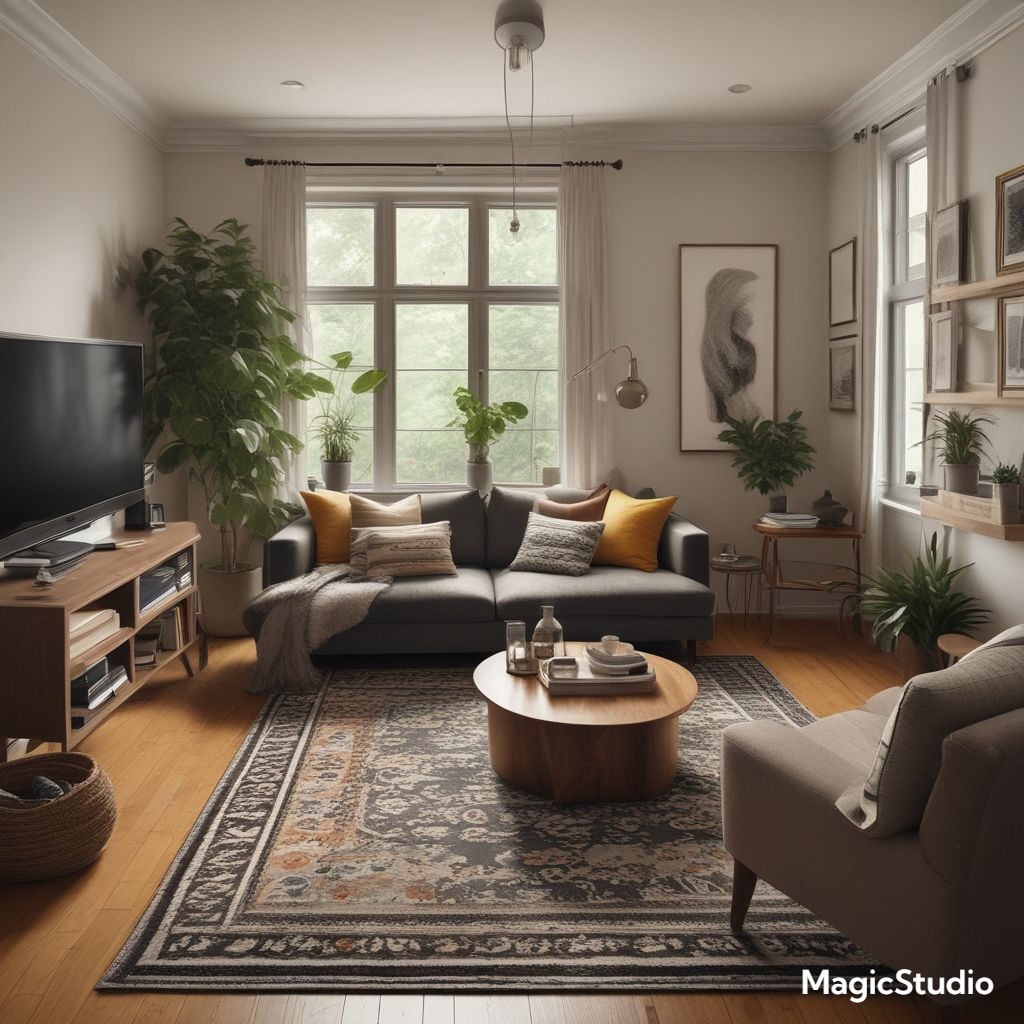
Use a Rug to Define the Space
A rug can help to define the living room area, especially if it is open to other parts of your apartment. Choose a rug that complements the color scheme of the room and that is large enough to encompass all of the furniture in the space. A rug can also help to ground the furniture and make the room feel more cohesive. This approach is common in both the US and EU, as it helps to visually divide and define distinct areas within a space.
Incorporate Smart Technology
Smart technology can make your small living room more functional and stylish. Consider adding smart lighting that you can control with your phone or voice, smart speakers for music and home automation, and a smart TV to create a truly modern and connected living space. This approach aligns with the growing trend of incorporating smart technology into home environments, popular in both the US and EU.
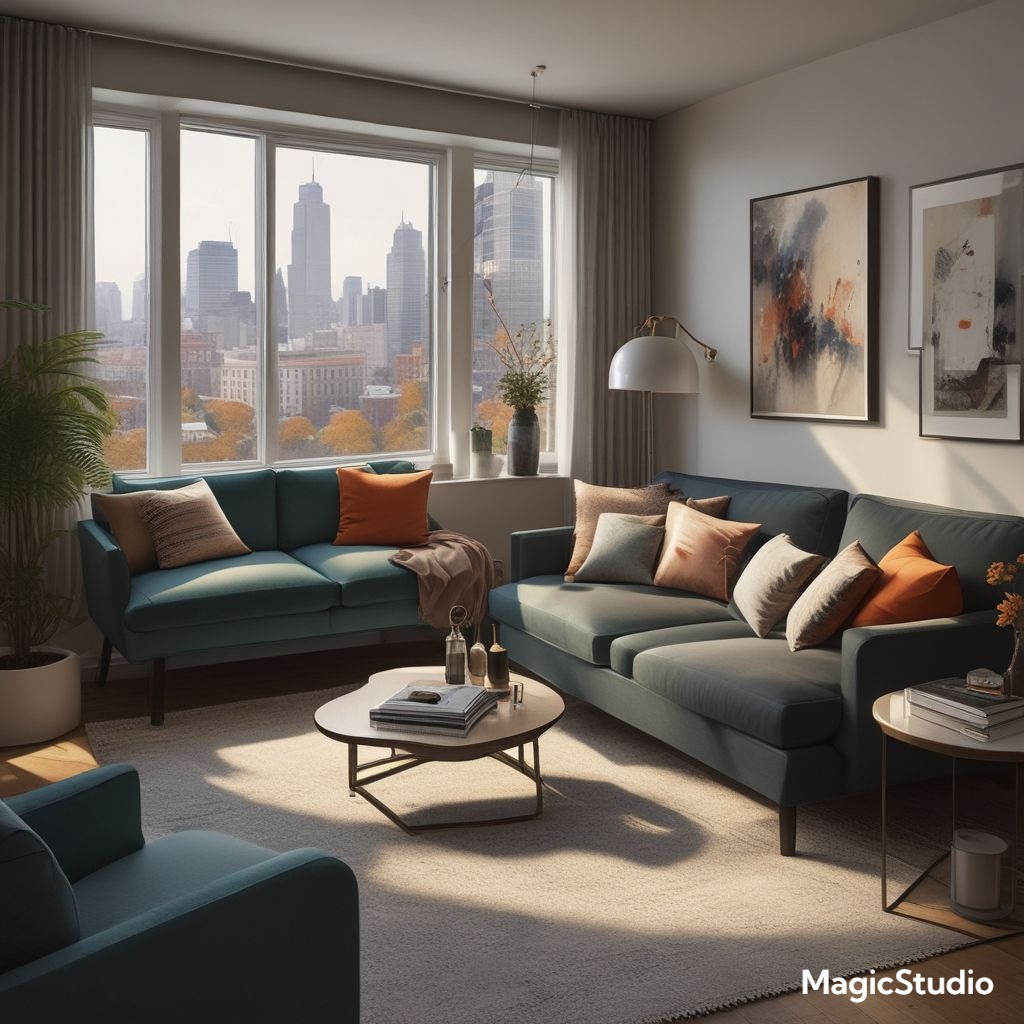
Incorporate Smart Technology
Smart technology can make your small living room more functional and stylish. Consider adding smart lighting that you can control with your phone or voice, smart speakers for music and home automation, and a smart TV to create a truly modern and connected living space. This approach aligns with the growing trend of incorporating smart technology into home environments, popular in both the US and EU.
Embrace a Bohemian Style
A bohemian style living room is characterized by its eclectic and colorful nature. Incorporate patterns, textures, and global influences to create a unique and lively space. Mix and match different styles and colors, and use natural materials like wood, leather, and cotton. Embrace a layered look with rugs, throws, and pillows, and add a touch of whimsy with decorative accents like macrame wall hangings and vintage furniture. This approach reflects the current trend of embracing global aesthetics and eclectic design styles, popular in both the US and EU.
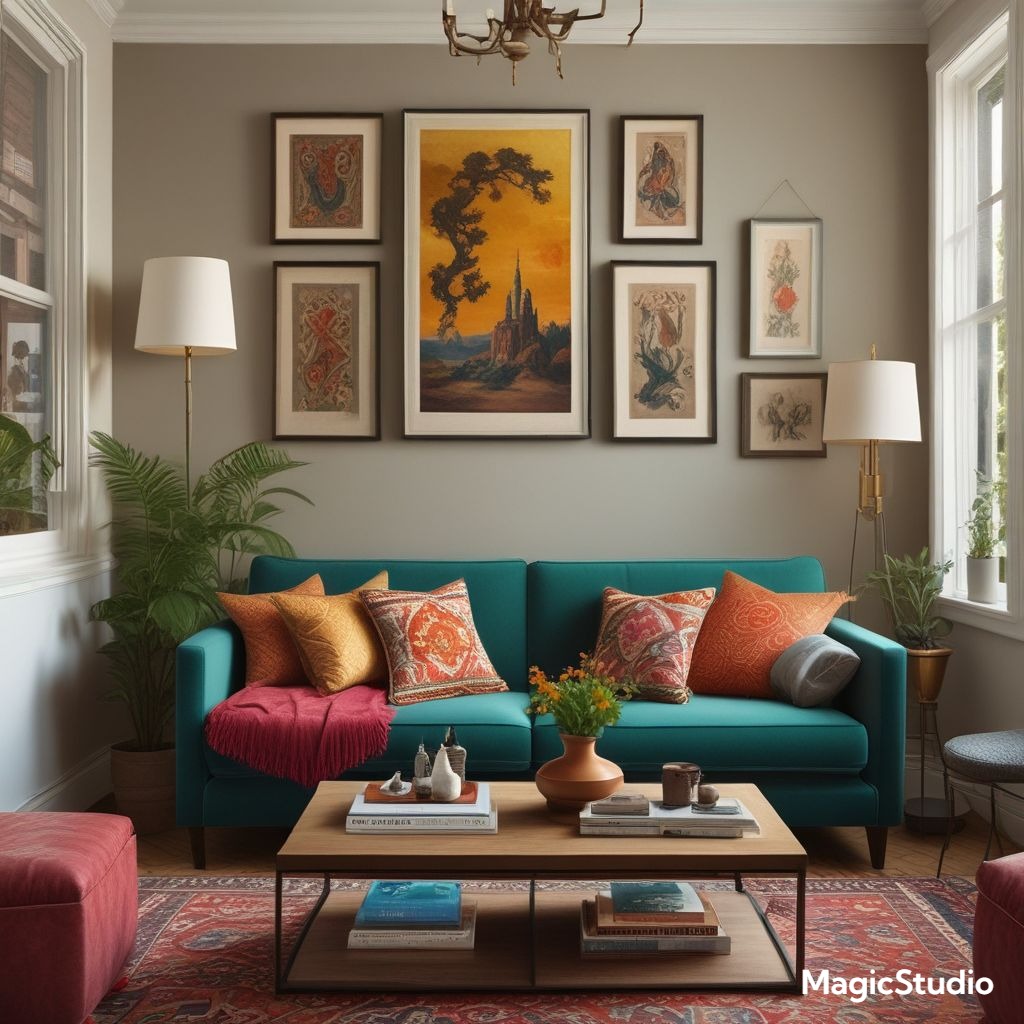
Embrace a Bohemian Style
A bohemian style living room is characterized by its eclectic and colorful nature. Incorporate patterns, textures, and global influences to create a unique and lively space. Mix and match different styles and colors, and use natural materials like wood, leather, and cotton. Embrace a layered look with rugs, throws, and pillows, and add a touch of whimsy with decorative accents like macrame wall hangings and vintage furniture. This approach reflects the current trend of embracing global aesthetics and eclectic design styles, popular in both the US and EU.
Go for a Mid-Century Modern Style
Mid-century modern style is characterized by its clean lines, simple shapes, and use of natural materials. Incorporate furniture with tapered legs, rounded shapes, and geometric patterns. Use neutral colors like beige, gray, and black, and add pops of color with accent pieces. Mid-century modern design is a timeless style that can work well in small living rooms, creating a sense of sophistication and elegance. This style is popular in both the US and EU, reflecting a renewed interest in classic design principles.
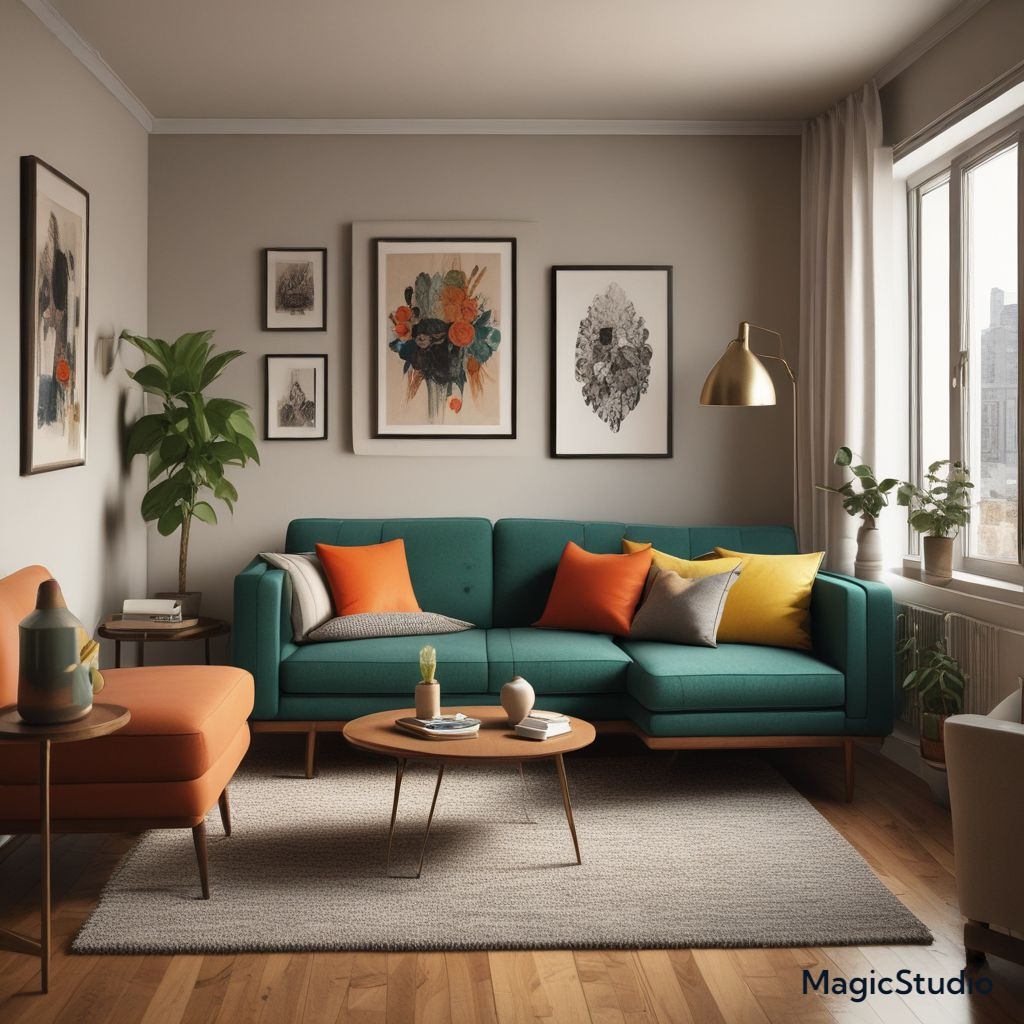
Go for a Mid-Century Modern Style
Mid-century modern style is characterized by its clean lines, simple shapes, and use of natural materials. Incorporate furniture with tapered legs, rounded shapes, and geometric patterns. Use neutral colors like beige, gray, and black, and add pops of color with accent pieces. Mid-century modern design is a timeless style that can work well in small living rooms, creating a sense of sophistication and elegance. This style is popular in both the US and EU, reflecting a renewed interest in classic design principles.
Embrace a Scandinavian Style
Scandinavian style is known for its simplicity, functionality, and use of natural materials. Choose furniture with clean lines and minimal embellishments, and use a light and airy color palette with accents of white, gray, and black. Embrace natural materials like wood, leather, and linen, and add a touch of warmth with pops of color in the form of throws, pillows, and artwork. This style is increasingly popular in both the US and EU, reflecting a trend towards minimalist living and sustainable design principles.

Embrace a Scandinavian Style
Scandinavian style is known for its simplicity, functionality, and use of natural materials. Choose furniture with clean lines and minimal embellishments, and use a light and airy color palette with accents of white, gray, and black. Embrace natural materials like wood, leather, and linen, and add a touch of warmth with pops of color in the form of throws, pillows, and artwork. This style is increasingly popular in both the US and EU, reflecting a trend towards minimalist living and sustainable design principles.
Embrace a Coastal Style
A coastal style living room is characterized by its relaxed and airy feel. Incorporate elements like blue and white stripes, seashells, and nautical accents. Use natural materials like wood, cotton, and linen, and choose furniture with a weathered or distressed look. The coastal style is perfect for creating a beachy and inviting atmosphere in a small living room. This style is popular in coastal regions of both the US and EU, reflecting a love for the seaside and a desire to bring the outdoors in.

Embrace a Coastal Style
A coastal style living room is characterized by its relaxed and airy feel. Incorporate elements like blue and white stripes, seashells, and nautical accents. Use natural materials like wood, cotton, and linen, and choose furniture with a weathered or distressed look. The coastal style is perfect for creating a beachy and inviting atmosphere in a small living room. This style is popular in coastal regions of both the US and EU, reflecting a love for the seaside and a desire to bring the outdoors in.
Embrace a Rustic Style
A rustic style living room is characterized by its warmth and natural charm. Incorporate elements like wood beams, stone fireplaces, and distressed furniture. Use natural materials like wood, leather, and stone, and choose a warm color palette with accents of brown, red, and green. The rustic style is perfect for creating a cozy and inviting atmosphere in a small living room. This style is popular in both the US and EU, reflecting a desire for comfort and connection to nature.
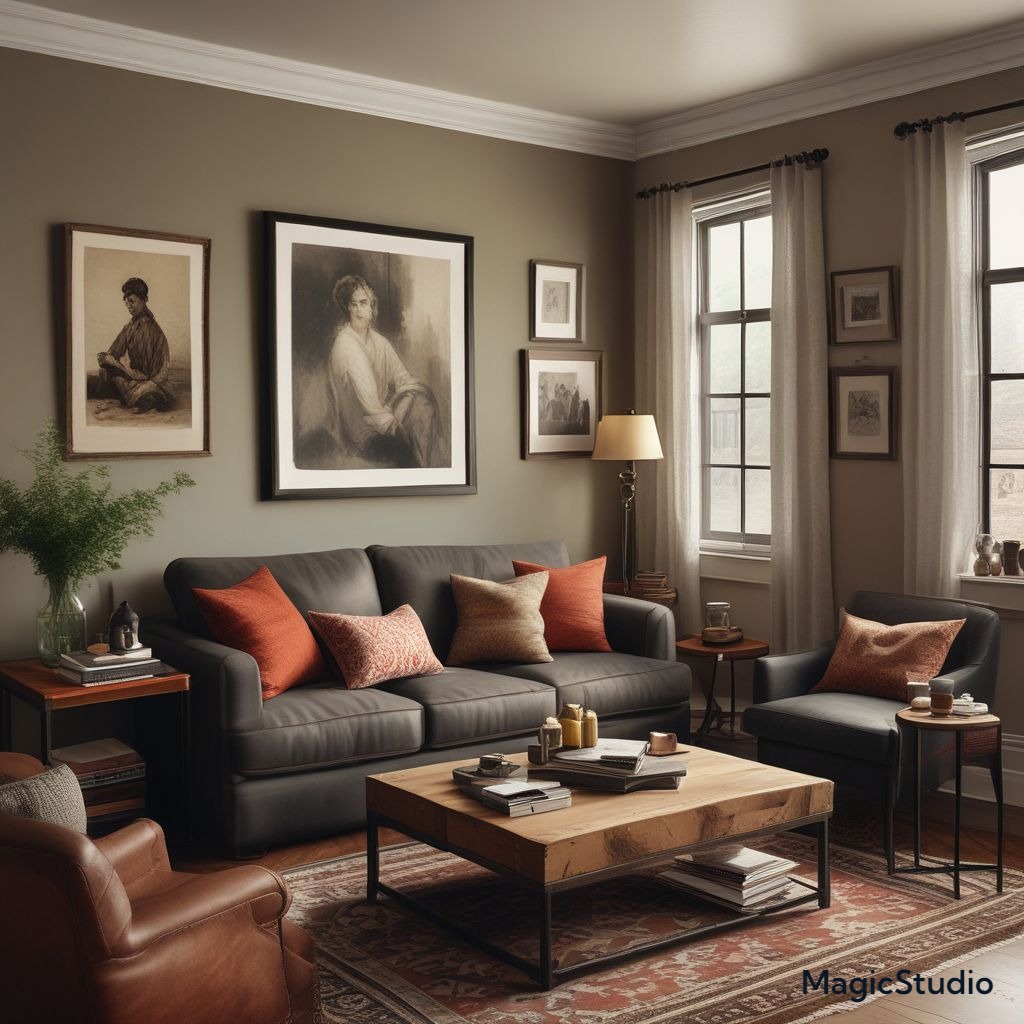
Embrace a Rustic Style
A rustic style living room is characterized by its warmth and natural charm. Incorporate elements like wood beams, stone fireplaces, and distressed furniture. Use natural materials like wood, leather, and stone, and choose a warm color palette with accents of brown, red, and green. The rustic style is perfect for creating a cozy and inviting atmosphere in a small living room. This style is popular in both the US and EU, reflecting a desire for comfort and connection to nature.